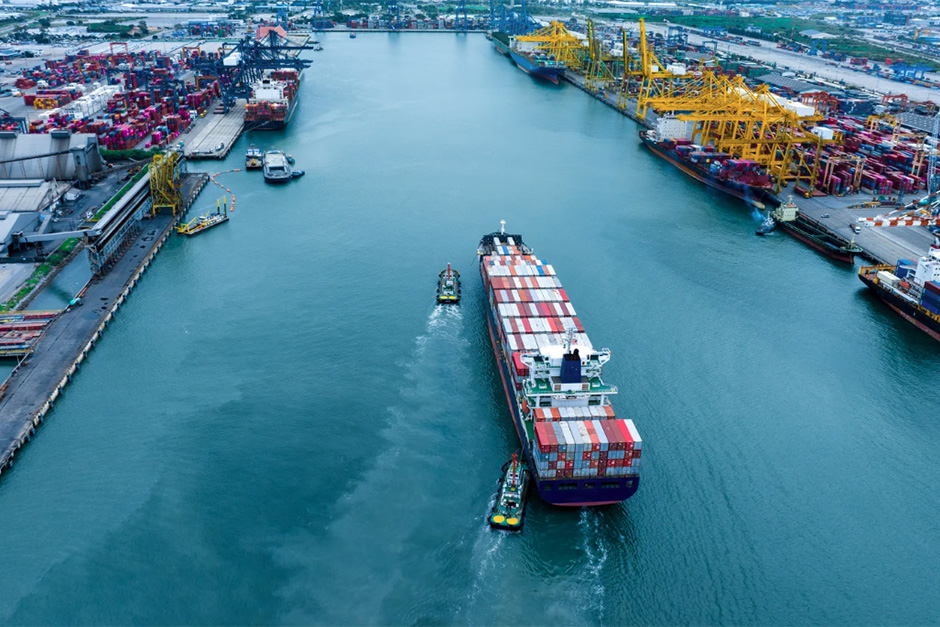
How a Port Management Dashboard Transforms Port Efficiency and Decision-Making
The Power of Data-Driven Decision Making in Ports
In the fast-paced and complex world of port management, efficiency, accuracy, and agility are critical. Seaports and inland ports handle massive amounts of cargo, coordinate multiple stakeholders, and operate under stringent time and cost constraints. Traditionally, decision-making relied on manual reporting, spreadsheets, and disparate systems that often led to delays and inefficiencies. However, with advancements in technology, a Port Management Dashboard is transforming the way ports manage operations, optimize logistics, and drive strategic decisions.
Why a Port Management Dashboard is Essential for Efficiency
A well-designed Port Management Dashboard provides real-time visibility into key port operations, offering a centralized and intuitive way to track performance metrics, monitor bottlenecks, and improve overall efficiency. By consolidating data from multiple sources, dashboards allow stakeholders to see the big picture while also drilling down into specific details when necessary.
Key Benefits of a Port Management Dashboard:
1. Real-Time Monitoring and Alerts
- Operators can track vessel arrivals, departures, container dwell times, and cargo movements instantly.
- Automated alerts notify stakeholders of delays, congestion, or potential disruptions, allowing for proactive management.
2. Improved Efficiency and Resource Allocation
- Live dashboards help optimize berth scheduling, pilotage dispatch, and workforce planning.
- Insights from historical data allow authorities to predict peak congestion times and adjust resources accordingly.
3.Enhanced Revenue Tracking and Financial Insights
- A Port Management Dashboard provides a clear breakdown of revenue streams, operational costs, and billing discrepancies.
- Automated invoicing and reconciliation improve accuracy in pilotage billing and port usage fees.
4. Better Compliance and Reporting
- Dashboards simplify compliance tracking by consolidating regulatory reporting requirements in a single interface.
- Historical and real-time data visualization ensures that port authorities can easily generate reports for audits and regulatory submissions.
Data Visualization: Making Complex Information Actionable
While raw data is essential, its real power lies in how it is interpreted and utilized. Data visualization transforms complex datasets into easy-to-understand charts, graphs, and heatmaps, helping port managers to identify trends and make informed decisions quickly.
Examples of Effective Data Visualization in a Port Management Dashboard:
- Heatmaps of port congestion areas to optimize traffic flow.
- Bar charts and graphs to compare operational performance across different terminals.
- Interactive maps showing real-time vessel positions and cargo tracking.
- Predictive analytics models that forecast demand, helping in capacity planning.
Case Study: A Port Management Dashboard in Action
A major North American port implemented an integrated Port Operations & Revenue Tracking Dashboard developed by Nicom Maritime. Before adopting the system, the port faced challenges in tracking container dwell times, managing pilotage dispatch efficiently, and reconciling revenue streams.
Results After Implementation:
- 30% reduction in port congestion due to improved scheduling insights.
- 20% increase in billing accuracy and faster invoice processing.
- Real-time alerts led to quicker response times in managing unexpected disruptions.
Choosing the Right Port Management Dashboard
When selecting a Port Management Dashboard solution, ports should consider:
- Customization: Can the dashboard be tailored to specific port operations?
- Integration: Does it work with existing logistics, billing, and tracking systems?
- Scalability: Can it handle future growth and additional data sources?
- User-Friendly Interface: Is it intuitive for both technical and non-technical users?
Conclusion: The Future of Data-Driven Ports
As the maritime industry continues to digitize, dashboards and data visualization tools will become essential for maintaining a competitive advantage. Ports that invest in real-time analytics and intuitive dashboards will be better positioned to make faster, smarter decisions—leading to increased efficiency, cost savings, and improved operational performance.
Looking to Implement a Port Management Dashboard?
At Nicom Maritime, we specialize in developing cutting-edge IT solutions for seaports, pilotage authorities, and maritime exchanges. Schedule a free consultation call today to see how we can eliminate your IT headaches and ensure smooth maritime operations. Click Here to schedule now or call us at 1-833-231-6182 to get started.


